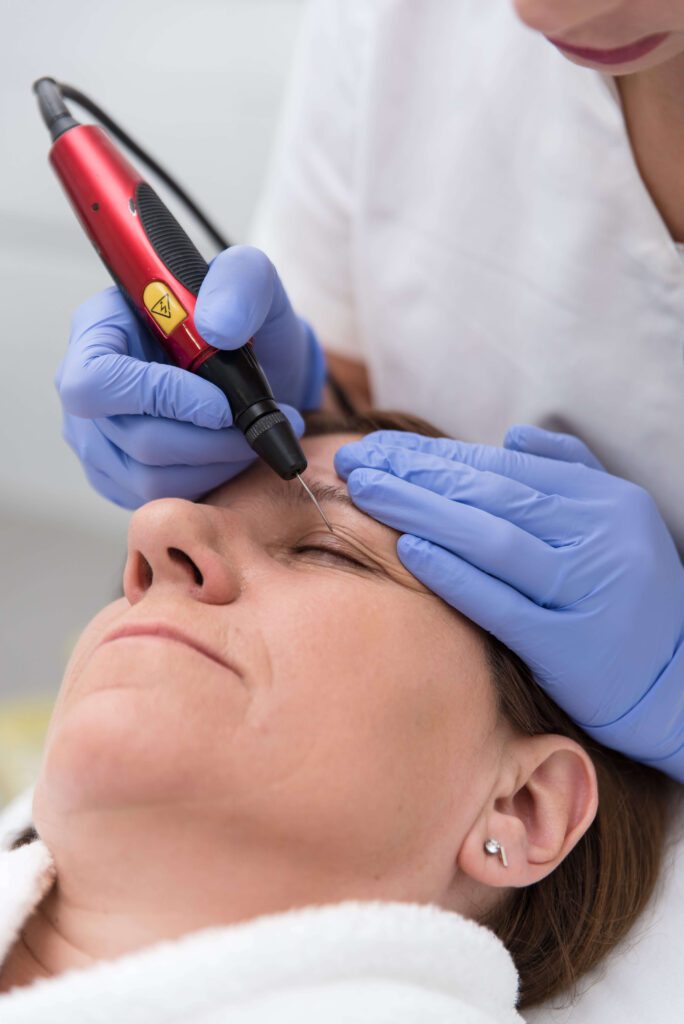Eyelid Lift
Excess skin on the upper and lower eyelids arises for several reasons: the aging process, which causes the skin to lose elasticity; loss of fatty tissue; weakening of the ligament system; and genetic factors. These factors together lead to a tired appearance of the eyes, drooping eyelids, and a feeling of heaviness in the eyes.

Treatment
With the non-invasive medical device Plasmage, which operates on the principle of plasma energy, excess skin on the eyelids is successfully removed non-surgically. Blefaroplazma thus presents an alternative to surgical blepharoplasty. The operating principle of the device involves releasing small fractions of plasma energy at the tip of the device needle that doesn’t touch the eyelid surface. This achieves controlled thermal heating, leaving small crusts on the skin that heal within a few days. Due to the release of fractional energy, the excess skin sublimates (evaporates into the surrounding environment), and the skin retracts (tightens). The treatment is performed on locally anesthetized skin, so it is painless.
Advantages of the treatment include:
- Non-invasiveness as it doesn’t require surgical intervention.
- Precision as it affects only the surface layer of skin, the epidermis.
- Safety due to the predetermined energy used during treatment; no stitches or scar formation.
- Short recovery time.
- Rapidly visible results
Candidates
Candidates for this treatment are individuals over 18 with drooping eyelids or excess skin on the lower eyelids. People with active inflammations, infections at the application site, pregnant women, those with pacemakers, and those prone to hypertrophic scarring are not candidates for Plasmage treatment.
Results
The initial effect is visible immediately after the treatment in the form of reduced excess skin, a more open gaze, and smoother skin. Once the crusts fall off in a few days, the results become more apparent, but the final effect should be awaited up to a month after the treatment.
Recovery
Post-treatment, small brownish crusts remain at the plasma release sites, which disappear in 5 to 6 days. During this period, the treated area needs to be applied with antibiotic cream and epithelizing gels or creams. In the first few days after the treatment, swelling of the treated region and the visibility of small brown crusts can be expected, which gradually fade after falling off. All changes are temporary and transitory in nature. It’s essential to protect the eyes from the sun using sunglasses and sunscreen for two months after the treatment.